In some ways, the EMP Museum’s Nirvana: Taking Punk To The Masses exhibit is nearly perfect. The lovingly curated exhibit (which ran from April 16, 2011 to March 19, 2017) tells the story of Nirvana, briefly touching on Kurt Cobain’s high school years, then documenting the band’s early years and each wave of success that followed, leading to worldwide fame and Kurt’s tragic suicide. The band’s story is told through original photographs and artwork, band posters, vinyl records and cassettes, clothing and a surprising number of actual instruments played by band members. There are multimedia video presentations throughout, providing valuable insight with important key figures. The EMP Museum, also known as the Experience Music Project, is located in downtown Seattle at Seattle Center. [Note: The EMP Museum has since been rebranded as The Museum of Pop Culture as of Nov. 19, 2016].
The exhibit’s title gives the first insight into what this exhibit is all about. Nirvana at its core was always a punk band. They had punk rock politics and morals, they listened to punk rock and they played punk rock. The nebulous and all-encompassing “grunge” tag was of course in use in even the band’s earliest years, but it did not inform the band’s music. From its earliest years, the band wanted to pummel its listeners with noise, feedback and aggression. At the same time, the band wanted to create melodies that would stay with the listener. A wall display of drummer Dave Grohl accurately sums up this sentiment:
I think the lure of punk rock was the energy and immediacy; the need to thrash stuff around. But at the same time, we’re all suckers for a beautiful melody, you know? I loved the Beatles when I was a kid, but I loved the Bad Brains too.” – Dave Grohl, Nirvana and Foo Fighters
The dichotomy of the band’s music, chaos and destruction along with beauty and serenity, all at the same time, are what made Nirvana unique. Sure, many rock bands before and after can make similar claims, but Nirvana captured a sense of alienation that struck a chord with America’s youth. Their breakthrough album Nevermind, and especially its lead single “Smells Like Teen Spirit”, created a sense of urgency and excitement not seen since the Beatles breakthrough. With the feverish success of Nevermind, polished and radio-friendly yet seething with frustration and dissatisfaction, Nirvana did effectively bring punk to the masses, exposing millions of young people to music that they otherwise would not have heard.
The exhibit begins with three wall-size images of singer Kurt Cobain, drummer Dave Grohl and bassist Krist Novoselic, all captured in a live setting. In front of the images are their actual instruments: Novoselic’s Gibson Ripper bass, Grohl’s drum kit and Cobain’s Mosrite Gospel guitar, which was used in key shows, including the April 17, 1991 show when Nirvana first played “Smells Like Teen Spirit” live. In this same entry area is an exhaustive list of contributors to the exhibit, which in itself is quite impressive. The exhibit relies on over 100 oral histories of key figures including producers, engineers, musicians, record executives, friends and family. There is also a note about the ambient soundtrack for the exhibit, “a quadraphonic serial deconstruction of the signature two-bar riff from Nirvana’s ‘Come As You Are’”, designed by producer Steve Fisk.
After the initial entrance there is a display of two pieces of artwork from Kurt’s senior year at Aberdeen’s Weatherwax High School. The first is a pencil sketch of Ronald Reagan raising his left arm, while holding hands with a small monkey (also in Reagan’s image) with his right hand. There appears to be a cane to Reagan’s left, perhaps indicating that he is to be dragged off stage, like in the old movies. The other artwork, A New American Gothic, shows an elderly punk couple, tattooed and pierced. It’s clearly modeled after the famous painting and pop culture reference American Gothic by Grant Wood, which depicts a stoic farming couple posing in front of their home in rural Iowa.
These early artworks by Kurt are revealing in several ways. They of course show that Kurt already had an aptitude for the arts. The Reagan sketch obviously has a very strong political bent, although it’s up to interpretation what Kurt was trying to convey. The painting of the elderly punk couple is interesting in that it so neatly fits with the exhibit’s theme. It is apparent that Kurt already had a love for punk rock culture and that he already felt himself to be part of it.
The next part of the exhibit talks about the underground alternative rock scene of the 1980’s and how it laid the foundation for bands like Nirvana to follow. The bands of this era were learning how to be successful selling records and touring in an industry that treated them as outsiders. Out of this underground community, featuring differing styles and aesthetics, came the success stories of R.E.M., the Replacements, Sonic Youth, Dinosaur Jr. and the Pixies. There is an interactive map showing the main bands of this time and their locations. In the Pacific Northwest, some bands of this timeframe included the Blackouts from Seattle, Beat Happening from Olympia, the Wipers from Portland and D.O.A. from Vancouver, B.C. You may listen to any of the bands listed on the map at a headphone listening station.
In the next area of the EMP Museum’s Nirvana: Taking Punk To The Masses exhibit is another interactive map, this time featuring only alternative bands of the Pacific Northwest, mostly but not exclusively grunge, and their locations. This is actually my favorite part of the entire exhibit, as it shows how geography really shaped the local grunge scene. Nirvana developed the way they did partially because of their isolation. Aberdeen is about an hour from the nearest big city, Olympia, but it is at least two hours away from Seattle. Depending on traffic, it could have taken the band three or four hours to get to Seattle. In an era before cell phones and before the internet, it would have been very difficult to interact regularly with other bands and scenes. A trip to Seattle took time and gas, commodities for band members struggling with odd jobs to pay the rent.
Aberdeen’s population in 2012 was about 16,500 according to U.S. census data, about the same as it was in 1990. In other words, there was a very small pool of candidates with which to create any type of band, much less an abrasive punk band. The reason why Dale Crover of the Melvins appears on some songs on Bleach, rarities compilation Incesticide and With The Lights Out box set is that Nirvana simply did not have a steady drummer during those early years. Dale Crover was just on loan from the Melvins.
The so-called “Seattle sound” was in reality a combination of different regional styles from all over the Pacific Northwest. In Washington, scenes were located in Aberdeen, Bellingham, Seattle, Tacoma, Ellensburg and Olympia. In Oregon, the scenes were in Portland and Eugene. Boise, Idaho also had its own scene that also helped contribute to the grunge sound.
So, if you’re wondering why Nirvana never collaborated with Pearl Jam on a record, the answer could be rooted in geography just as much as the reality that the two bands had different styles. Yet part of the reason for different styles in the first place lies in the geographic isolation of these different scenes. Each scene was allowed to incubate on its own for several years without the intrusion of mass media hype, the internet, MTV and other external factors. So that, when the media did finally shine a light on the music coming from “Seattle”, many diverse styles had already been cultivated.
From here, the exhibit delves into the surprisingly well-documented early history of Nirvana. The band, formed in 1987, initially went by a number of different names, including Skid Row, Pen Cap Chew, Bliss and Ted Ed Fred. The exhibit features an early concert flyer from May 1, 1987 in Olympia, when the band was still called Skid Row. There is also a setlist from this era featuring songs that would later end up on Bleach.
Their first show under the name Nirvana was at the Community World Theater in Tacoma on March 19, 1988. A poster of this concert is on display, as designed by Kurt Cobain. On Oct. 30, 1988 the band played at Evergreen State College, where Kurt smashed his Univox Hi-Flyer guitar, the remains of which are also featured. On Feb. 25, 1989 the band played at the HUB East Ballroom at the University of Washington. According to the audio commentary of the exhibit, available on iPod audio guide for $5, the band had drunk two gallons of cheap red wine beforehand and proceeded to smash their instruments after their set, forcing the University to stop booking new bands for a time.
From a recording history, Nirvana’s first demo was recorded on Jan. 22, 1988, when the band was still called Skid Row. Dale Crover played drums for this session, although the official drummer at the time was Aaron Burckhard. Burckhard’s time with the band was short-lived, and he was replaced by Chad Channing in May of 1988.
On the strength of the demo, Nirvana was able to negotiate the release of the Love Buzz/Big Cheese single in November of 1988. The band had mixed feelings about the single, as they wanted to release a full-length album and they weren’t especially happy that their first official release included a cover song (“Love Buzz” is a Shocking Blue song). Sub Pop Records for its part was not immediately smitten with the band and the label wanted to follow up the single with an EP instead of a full-length.
The band instead presented to Sub Pop the LP Bleach, which was produced by Jack Endino and released on June 15, 1989. Recording sessions for the album reportedly only cost the band $606.17, paid for by Jason Everman, who was brought on as second guitarist for a time. Bleach sold initially around 40,000 copies, but the band didn’t feel the label was putting enough effort into marketing the band. A follow-up EP Blew, produced by Steve Fisk, was released in December of 1989.
Nirvana knew they were destined for bigger things and negotiated a 3-year contract with Sub Pop Records, the first contract that the band or the label had ever signed. The contract, featured in the EMP Museum’s Nirvana: Taking Punk To The Masses exhibit and also available online here, called for an album a year, with the band to receive $600 advance for the initial option (which would have covered Bleach), then a $12,000 advance for a second album option and finally $24,000 for a third album option. However, the band’s time with Sub Pop was reaching its end, with the band completing initial recordings of what would become Nevermind with Butch Vig in April of 1990 at Smart Studios in Madison, Wisconsin. These sessions would later become known as the Smart Sessions.
Around this time Nirvana began to express dissatisfaction with Chad Channing’s drumming, and Channing expressed frustration with not having enough creative input into the band’s music. Channing quit Nirvana as the band started shopping around the Smart Session tapes. In the meantime, the single Sliver was recorded with Mudhoney drummer Dan Peters. The band briefly re-hired Dale Crover to complete a seven-date West Coast tour. In September of 1990 the band was introduced to Dave Grohl, who would become the band’s final and permanent drummer. Grohl’s first show with the band was Oct. 11, 1990, of which the exhibit features a poster from.
On the strength of the Smart Session recordings, and on the recommendation of Sonic Youth’s Kim Gordon, Nirvana signed with DGC Records, a Geffen imprint. Their Sub Pop contract was bought out and the band focused on completing Nevermind. The label had hoped for sales of 250,000, comparable to Sonic Youth’s Goo. Sales for Nevermind were of course off the charts, driven primarily by MTV exposure for the “Smells Like Teen Spirit” video. At one point the album was shipping 400,000 units a week. Worldwide sales for Nevermind are now at 31 million, and the album is certified diamond by the RIAA in the U.S. for shipments in excess of 10 million units.
The Nevermind era is represented in the exhibit with the original artwork proof as sent to the studio for approval. The artwork of course famously features a naked infant boy swimming underwater while chasing a dollar bill on a string. The boy’s penis is clearly visible, which caused some controversy with the record label and the general public. There is a handwritten note on the proof saying “we can cut out the dick out if you want” and that the bottom of the pool can also be cropped out if necessary.
From the same era is the 1992 MTV Music Video Award statue that Nirvana received for “Smells Like Teen Spirit”. The band received awards for Best Alternative Video and Best New Artist categories. Nirvana were told in advance not to play the song “Rape Me” but they infamously played the first few bars of the song before switching to “Lithium”. The guitar that Kurt played on the “Smells Like Teen Spirit” video, a Fender Competition Mustang, is also on display, in addition to several of Kurt’s sweaters. A worker’s shirt that was worn by Krist Novoselic is also part of the exhibit.
Musically, Nirvana was being pushed in different directions in its sound, with feedback coming both from the label and internally from the band itself. The initial mix of Nevermind as completed by Butch Vig was very different from the version released to the public. The band chose Andy Wallace to do the final mix, presumably based on his experience with Slayer. Instead of making the album more raw and in your face he came back with a very polished, radio-friendly sound. The band later expressed embarrassment with the mixing of Nevermind, although its accessible sound is what set the stage for superstardom.
With In Utero Nirvana went with producer Steve Albini, known as a member of Big Black and also for his productions for many underground bands. The band purposefully set out to produce an abrasive, less commercial album, more in line with their punk rock roots. After Albini’s initial mix, however, the band decided to have Scott Litt remix the first two singles, “Heart Shaped Box” and “All Apologies”. Scott Litt is most famous for his work on R.E.M.’s most successful releases including Document, Green, Out of Time, Automatic for the People, Monster and New Adventures in Hi-Fi.
The choice to select Scott Litt for additional remix work was an odd one in some ways, but it is demonstrative of pressure Nirvana was feeling from the studio. Nirvana was now a full-fledged business entity and the label had an enormous stake in ensuring the album’s success, which they initially deemed to be un-releasable according to some reports. Kurt himself wanted to improve on these songs, however, to make them “perfect”, so it’s disingenuous to infer that the pressure came solely from the label.
The continual tug-and-pull of Nirvana’s sound is fascinating. The band wanted to be a raw punk band, but they also wanted to write pop songs. They wanted an abrasive noisy sound, but they loved melody and the art of songwriting. With Nevermind, they felt their sound had become too commercial. With the production of In Utero they determined that they needed to eschew the initial mix for a more polished sound. Listeners can hear for themselves the production differences by purchasing the deluxe box set versions of Nevermind and In Utero.
With regard to the Nirvana timeline, as told by the EMP Museum’s Nirvana: Taking Punk To The Masses exhibit, in the summer of 1992, before the recording and release of In Utero, the band played what some view to be the definitive performance of their career at England’s Reading Festival. The rarities collection Incesticide, a joint release between DGC Records and Sub Pop Records, was released in December of 1992 to allow the band more time to record In Utero. Although the label did not put much effort into promoting the collection it managed to sell 500,000 copies in two months.
By the time In Utero was finalized for release in September 1993, Nirvana found itself under an enormous amount of pressure. For touring purposes, the band added Pat Smear of the Germs as a second guitarist, the first appearance of which was for the band’s Saturday Night Live appearance on Sept. 25, 1993. The In Utero era artifacts that fans will find most interesting are the actual full-size anatomical model used for the album’s cover artwork and a similar model used for touring purposes.
Nirvana gave an impassioned timeless performance in November 1993 for MTV Unplugged. The set list was unexpected, featuring covers of the Meat Puppets, David Bowie and the Vaselines, in addition to songs from the band’s normal discography. One of the session’s most memorable moments came with the performance of “Where Did You Sleep Last Night?”, a traditional American folk song popularized by blues musician Lead Belly. The intimate performance was so naked and revealing, painful yet beautiful, that it only served to endear the band to its fans even more. The exhibit features actual instruments used during the performance, including the Guild acoustic bass played by Krist Novoselic and the colorful Buck Owens guitar played by Pat Smear.
Kurt was becoming more and more distressed with his band’s fame, however, and increasingly turned to heroin, painkillers and alcohol to numb his pain. Nirvana’s final performance was on Mar. 1, 1994 in Munich, Germany. An actual setlist from the March 1 show is featured in the exhibit, a haunting reminder of the band’s final months. On March 4, Kurt overdosed from a combination of prescription Rohypnol and alcohol. An intervention was staged, which convinced Kurt to enter a rehab facility in late March. Kurt escaped and returned to Seattle. He died of a self-inflicted shotgun wound on April 5 and was found in his home on April 8.
Rounding off the exhibit is a grunge listening station for bands including Tad, Mudhoney, the Melvins, Soundgarden, Alice In Chains, Nirvana (of course), the Posies, Treepeople, the Gits, Skin Yard, Green River, Love Battery, Pearl Jam, Mother Love Bone and more. Like the other listening stations in the exhibit, museum patrons are presented with a wonderful opportunity to explore music that they may not have heard before. The listening selections run so deep that even the most ardent grunge will find something they haven’t heard before. Even if you have heard the music before, the listening stations are a great reminder of why we love this music in the first place.

Guild acoustic bass and Buck Owens American acoustic guitar as played during the ‘MTV Unplugged’ concert.
All in all, Nirvana: Taking Punk To The Masses is simply fantastic. It makes an excellent use of limited space with the EMP Museum, and it engages its viewers with a wide variety of stimuli. There is very little I would do differently, actually.
If I were to change anything, a few items below I feel would put the Nirvana: Taking Punk To The Masses exhibit over the edge, transforming it from excellent to outstanding.
- Transfer the band’s first demo tape to another tape. Then run the tape through a boombox with headphones so that viewers can literally listen to the demo tape exactly as a studio executive would have. This would be very simple to do, providing the cassette tape is still in good condition. Alternately, the tape could be converted to digital, although that would not be as interesting for the viewer.
- Focus more on the personal lives of Nirvana band members, particularly the at-times chaotic relationship between Kurt and Courtney and Kurt’s addiction to heroin. Although this could be potentially divisive, it’s something that ultimately is probably necessary to understand the dynamics of how and why Kurt composed the music that he did. Also, the birth of Frances Bean could be explored in more detail.
- Explore Kurt’s lyrics in a meaningful way. Part of what made Nirvana so unique and special was Kurt’s lyrics, which, although mysterious were very evocative.
- Feature music that is completely unreleased anywhere, even if just a 30-second snippet. Although I’m sure the band is very protective of its recording legacy, and its future profits, exclusive material would be exciting for fans. Also, even recording devices such as smartphones, digital cameras, etc. would not be able to record the song in any kind of quality that would endanger any future potential release.
- Feature a post-script of what happened after Nirvana broke up. Dave Grohl’s Foo Fighters are considered among the first post-grunge bands, for example, and their story is an interesting one. Grohl went on to create the Sound City documentary and soundtrack, which in turn led to a Nirvana mini-reunion of sorts with Paul McCartney taking the place of Kurt. Novoselic for his part hasn’t been as active as a musician, but he’s played an important role in Washington state politics, starting with the 1995 formation of JAMPAC (the Joint Artists and Music Promotions Political Action Committee).
To this last point, though, in some ways the abrupt end to Nirvana: Taking Punk To The Masses is entirely appropriate. Grunge as a movement died a premature death with Kurt Cobain on April 5, 1994. But the media hype and overexposure would have killed the genre regardless. All we can do is look back on all the wonderful music that was created during the late 80’s and early 90’s, amazingly concentrated in one city in the Pacific Northwest. Nirvana was the heart and soul of grunge, and Nirvana: Taking Punk To The Masses is a fitting tribute to their legacy.
For more articles about grunge rock, hard rock and heavy metal please see:
- Bastard of Reality | Seattle Black Sabbath tribute
- Concert Review – Guns of Barisal, Swarming Hordes, The Abodox
- Interview with Bastard of Reality singer David Hillman
- Jar Of Flies (Alice In Chains tribute) live in Lynnwood, WA
- Layne Staley Last 3 Recorded Songs
- New Sub Pop Airport Store open for business
- Review of Guns N’ Roses – ‘Chinese Democracy’
- Soundgarden – ‘Screaming Life/FOPP Reissue’
[Nirvana: Taking Punk To The Masses was an exhibit at The EMP Museum (now re-branded as MoPOP). The original Nirvana exhibit ran from to April 16, 2011 all the way up to March 19, 2017. Due to popular demand, a scaled-down version of the exhibit opened at MoPOP on March 16, 2018. The following review was written on Dec. 16, 2013 of the previous exhibit at the EMP Museum.]
ErikTomrenWrites is a participant in the Amazon Services LLC Associates Program, an affiliate advertising program. Your purchases on Amazon.com via our links will help support ErikTomrenWrites – at no extra cost to you!
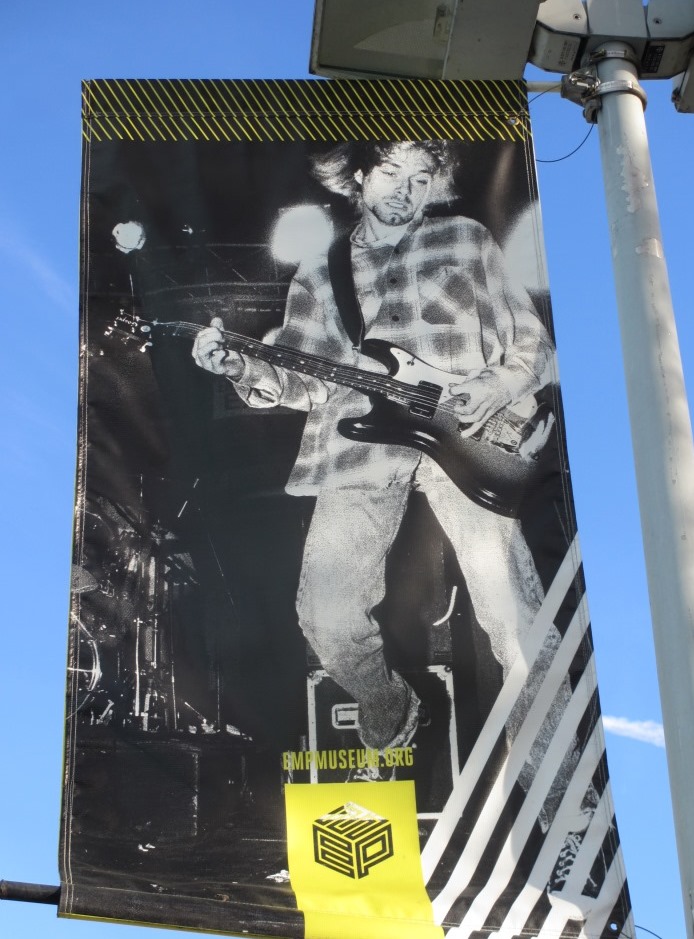
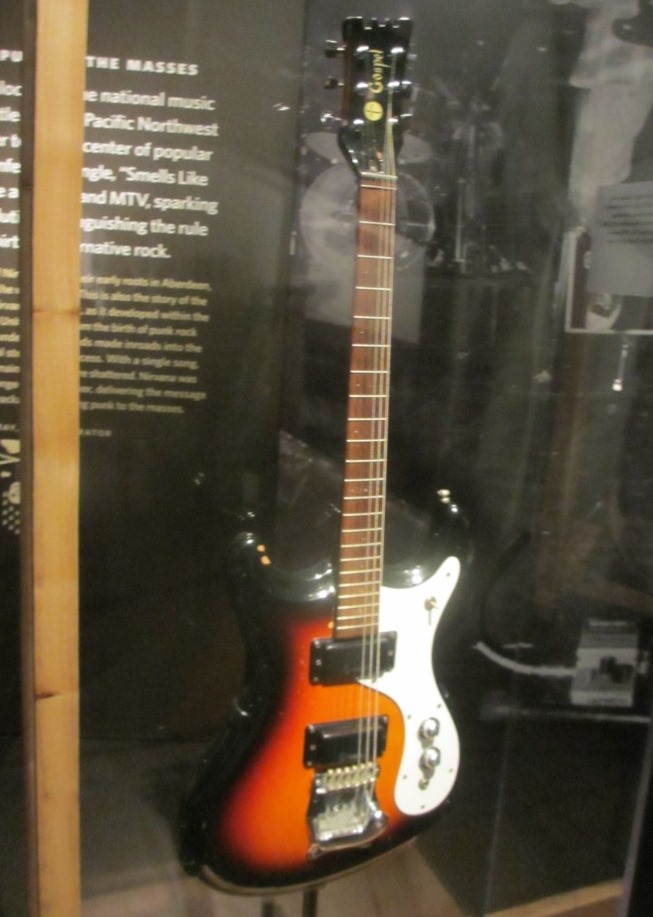
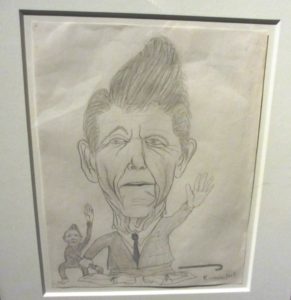
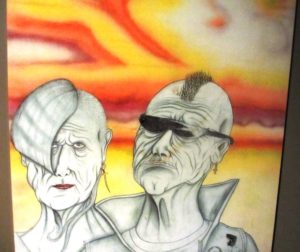

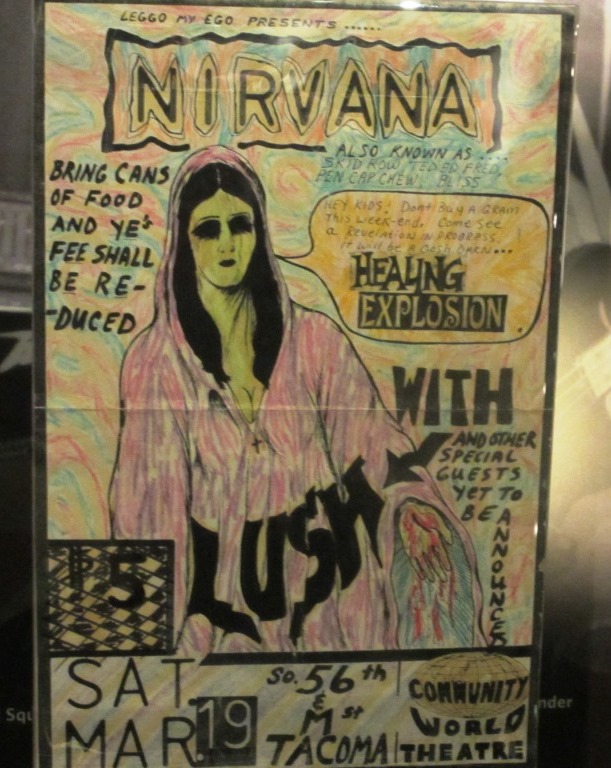
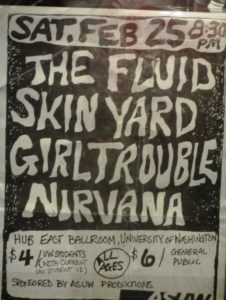




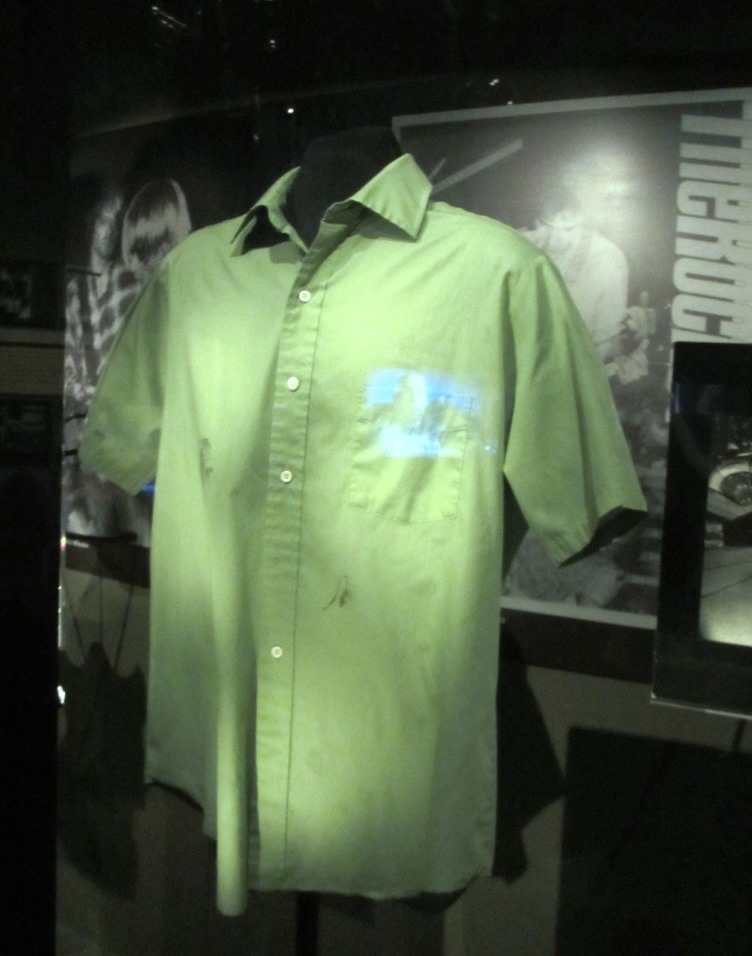
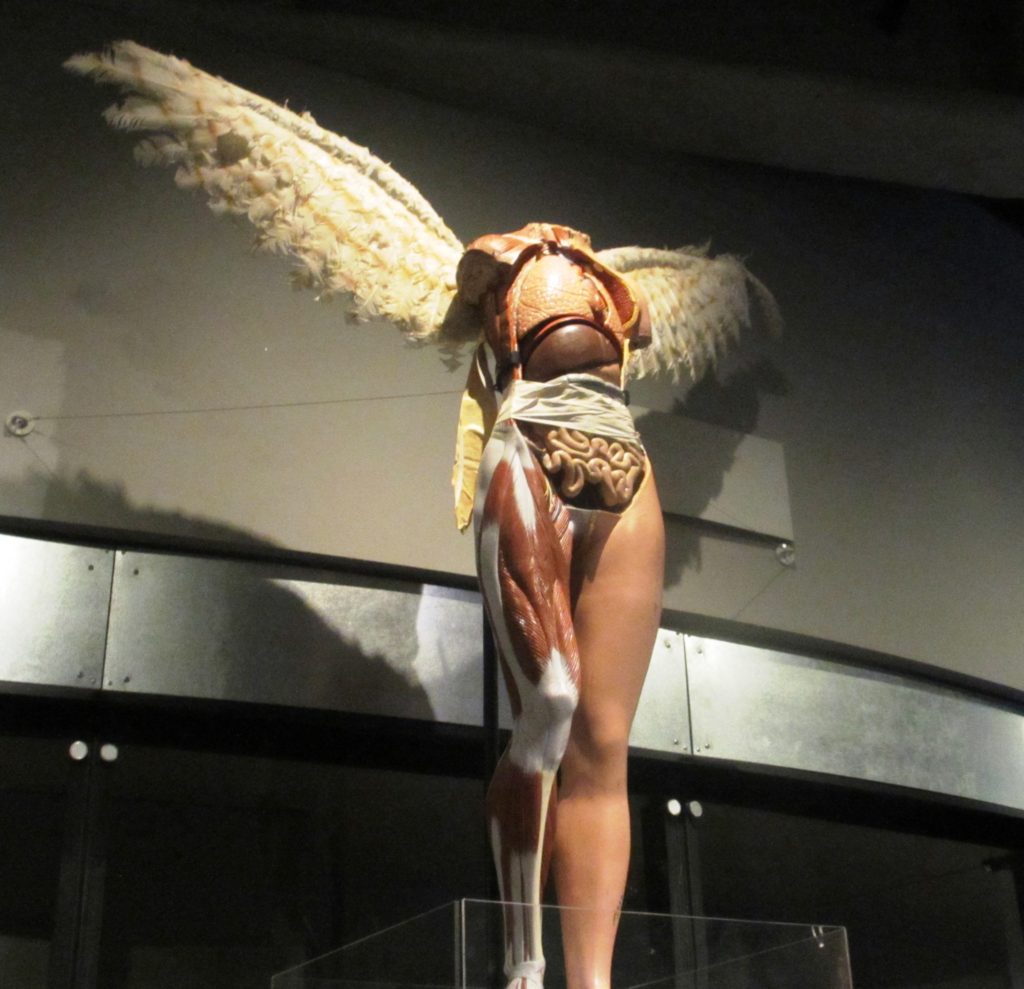
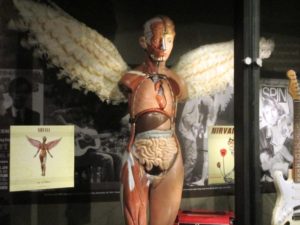



Pingback: Jar Of Flies (Alice In Chains tribute) live in Lynnwood, WA - #ErikTomrenWrites
Pingback: Layne Staley Last 3 Recorded Songs - #ErikTomrenWrites
Pingback: New Sub Pop Airport Store open for business - #ErikTomrenWrites
Pingback: Soundgarden – ‘Screaming Life/Fopp’ reissue - #ErikTomrenWrites
Pingback: Interview with Bastard of Reality singer David Hillman - #ErikTomrenWrites
Pingback: Bastard of Reality | Seattle Black Sabbath tribute - #ErikTomrenWrites
Pingback: Concert Review - Guns of Barisal, Swarming Hordes, The Abodox - #ErikTomrenWrites
Pingback: Review of Guns N' Roses - 'Chinese Democracy' - #ErikTomrenWrites